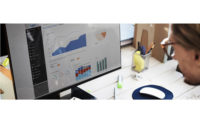INDUSTRY HEADLINE
Materialise Brings 'Making a Difference / A Difference in Making' Exhibition to the Red Dot Design Museum Essen

ESSEN, GERMANY — Visitors of the Red Dot Design Museum are invited to discover pluralistic aspects of 3D printing, a manufacturing technology that allows us to make things differently, and also to ponder how it can help individuals, enable social changes and positively contribute to the environment. The exhibit runs through Oct. 30. In other words, how 3D printing is making a difference.The exhibition “Making a Difference / A Difference in Making” brings together more than 80 groundbreaking 3D-printed works of art, design, engineering and science.
Curated by Marta Malé-Alemany, and produced by Materialise, a pioneering company dedicated to the engineering, development and application of 3D printing, the exhibition invites visitors on a learning journey about a disruptive technology which is likely to be critical in the next decade.
“The Red Dot Design Museum displays the world’s largest exhibition of contemporary design and is a reference for industrial designers. Therefore it is the perfect place to host an exhibition that explores the technical and creative potential of 3D printing technology. We want to show visitors the pieces created by designers and technical experts that have challenged the use of materials and boundaries in 3D printing and how often these challenging ideas have been transferred to successful industrial applications”, says Marcus Joppe, managing director of Materialise Germany.
Peter Zec, founder and CEO of Red Dot, explains: “3D printing opens up new chances and possibilities to design products. More and more laypeople are discovering this too, and are producing objects at home in their own mini factory. But in order to fully exploit the potential of Additive Manufacturing for the mass market, it needs professional designers who possess the necessary expert knowledge. I am glad that Materialise is showing, in this exciting exhibition at the Red Dot Design Museum Essen, how 3D printing is successfully being applied, and is thereby informing a broad audience about the influence of this technique on people, the society and environment.”
This traveling exhibition was first presented in 2015 at the Centre for Fine Arts in Brussels during the 25th anniversary of Materialise. Curator Marta Malé-Alemany, architect and recognized researcher in the field of digital fabrication technologies, has selected works from renowned artists, designers, public initiatives and prestigious research institutions as well as those of unknown innovative makers. The exhibition “Making a Difference / A Difference in Making” was acclaimed by both specialists and the general public in Brussels.
About the exhibition
The exhibition is presented in two main sections. The first section, “A Difference in Making”, features a series of impressive and fascinating design creations that explore material opportunities enabled by the invention and development of 3D printing technology. It presents works from important designers such as Patrick Jouin, Iris van Herpen, Jan Wertel, Gernot Oberfell and Daniel Widrig among others.
“Making a Difference”,the second section, addresses three different curatorial domains: “Environment”, “Individual” and “Society”. Each category presents 3D-printed objects that range from medical implants, prosthetic devices, automotive and aerospace parts, furniture pieces, household appliances and more, with the aim of making visitors aware of how this technology already surrounds lives all around the world.
The “Environment”category presents projects that use 3D Printing with the specific concern of saving material and energy resources, as well as designs that question how 3D printing technology itself can be more sustainable and environmentally responsible.
The “Individual” category illustrates how 3D Printing enables the production of customized objects and parts, based on personal data. The projects presented here relate to the personal stories of people who have been touched by the technology, as it provides an individual solution to a unique case.
The category “Society” of “Making a Difference” displays different ways in which 3D Printing can shape our society. Here too, the selected projects give a multi-faceted perspective on the added value of this technology, while provoking inevitable questions. The exhibits address various subjects such as: the use of 3D Printing for the conservation of our past and future heritage, its role in revitalizing lost crafts, its implications as a critical instrument of emancipation and social empowerment, its potential for improving education, and others.
For more information, visit www.red-dot-design-museum.org.
Looking for a reprint of this article?
From high-res PDFs to custom plaques, order your copy today!






